The Pearl Test: 7 Expert Methods to Ensure Your Pearls Are the Real Deal

For centuries, women have been enthralled with the gift of nature known as pearls.
As a jewelry expert, I am constantly amazed at how these little wonders bring beauty and sophistication to any piece they’re attached to.
Pearls are unique in many ways, which is why legends and lore have surrounded them for so long.
One popular story claims that pearls started as the teardrops of a nymph imprisoned in a high tower – her punishment for loving someone she shouldn’t.
Whether you believe these stories or not, there’s no denying one thing: Pearls are intriguing. Unlike other gems, pearls seem almost ethereal at times.
Their lustrous glow and iridescent shimmer give an air of elegance to nearly any wardrobe ensemble imaginable.
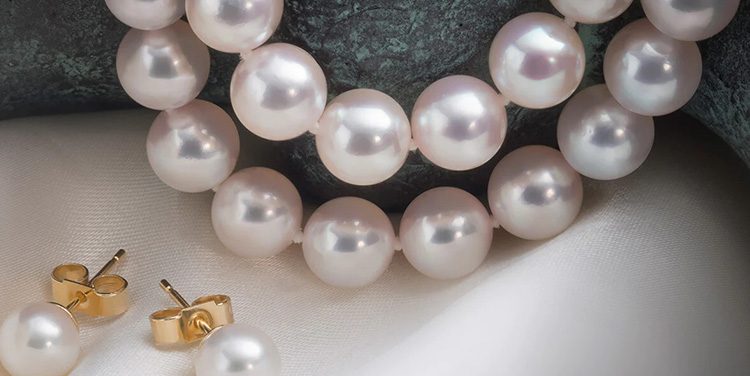
But with popularity comes risk – specifically, the risk of coming across fake or imitation pearls while shopping around.
That’s where pearl authenticity tests come into play.
In this blog post, I’ll share seven expert techniques for making sure your pearls aren’t mere imposters.
From observing surface texture to assessing weight and temperature, professionals in this field swear by these methods — whether they’re pearl enthusiasts or avid collectors.
Why Pearls Do Not Lose Their Uniqueness from Century to Century?
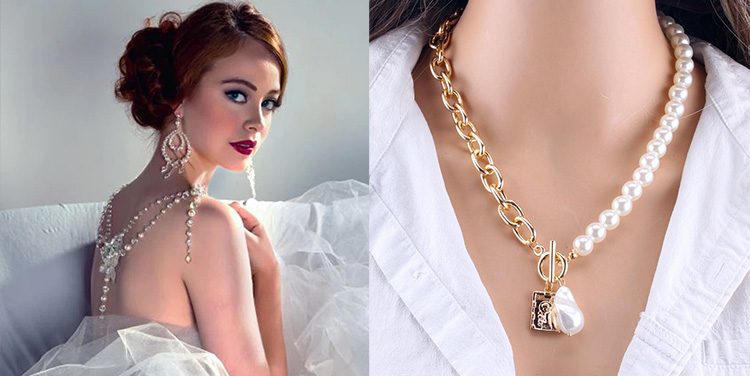
What truly sets pearls apart? Their eternal beauty hasn’t changed for hundreds of years.
As you delve into the history of these iridescent gems, amazing discoveries highlight their rarity and appeal.
From Elizabeth Taylor’s incredible 6 kg pearl found near Palawan Island in the South China Sea to a natural formation of nine fused pearls resembling a cross found off Australia, pearls have made quite an impression on the jewelry world.
Both examples deservedly earned them a spot in the Guinness Book of Records.
But what makes them unique is not just their size or shape: authentic pearls do not lose their luster or change color over time like other gemstones.
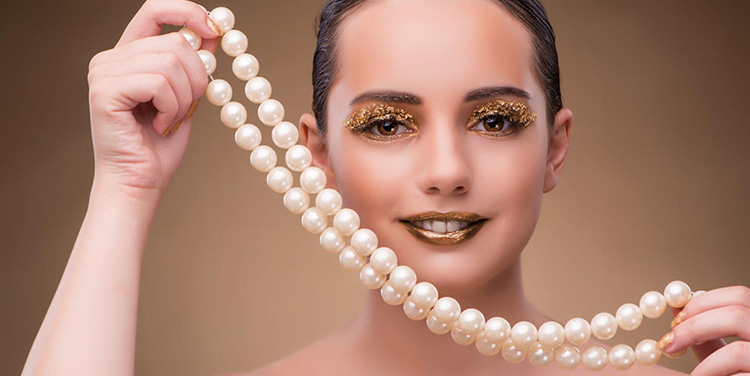
Even after decades of being treasured – and passed down through different generations – they still shine as if new.
Genuine pearls, which take many years to form within mollusk shells, are highly valued by those working with jewelry materials.
However, it’s worth noting that there are also imitation versions crafted from cheaper substances, such as snow-white mother-of-pearl.
Knowing how to tell real from fake can be particularly important when purchasing items featuring intricate inlay work involving these objects.
As a result, they keep going strong throughout centuries due to their individuality and ageless allure.
Because they never seem dull despite being old hat by thousands of years ago standards, they are considered something special rather than common-or-garden stones that continue to attract anyone who loves jewels anywhere on Earth.
How to Understand that Pearls Are Real?
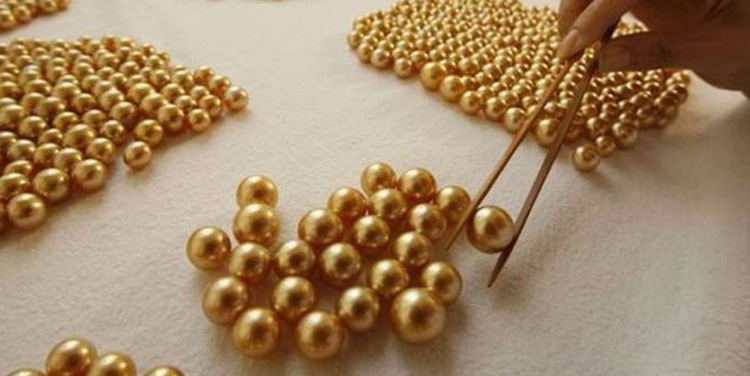
If you’re planning to buy a pair of earrings or a ring with pearls, there are many ways to distinguish the real article from cheap fakes.
Familiarise yourself with the most popular in advance, and this will save you unnecessary expenses.
The major drawback of buying mother-of-pearl fakes is that, unlike natural stone, they quickly get ugly.
After just several months – or even years – artificial stone turns black, and jewelry loses its first-class appearance.
But this is not the only way to check pearls’ authenticity.
There are seven trusted methods below which can be easily used to tell if your pearls are genuine:
Method #1: Consult an Expert
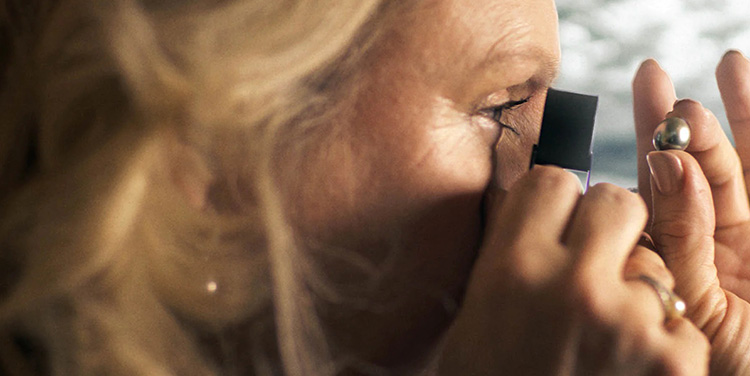
One of the most reliable ways to determine whether pearls are fake is by consulting an expert gemmologist or someone who works with precious and semi-precious stones.
These professionals know exactly what real pearls should look like.
They also have specialist equipment that can accurately assess pearl quality and authenticity.
If you cannot see such an expert, another clue might be price-tag related: genuine items do not come suspiciously cheap, even when on sale.
Researching market prices for pearl jewelry gives some idea about what is usual rather than suspiciously inexpensive imitation.
Genuine pearls can be purchased for as little as $100 or less, but they can also cost millions of dollars.
In contrast, imitation pearls often have no value and might only set you back a few dollars.
Method #2: Nail Test
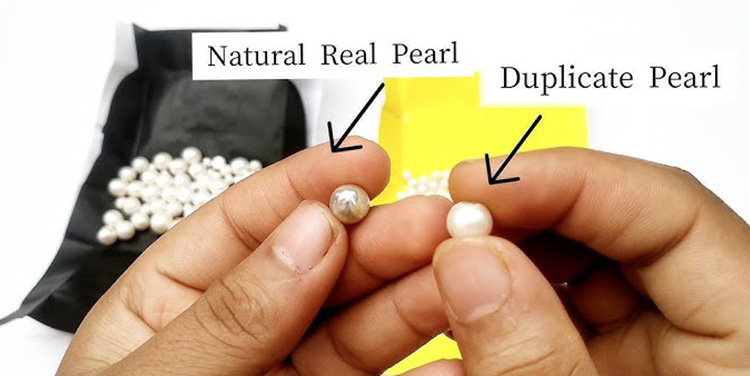
Let’s move on to a second method, the nail test. It can help separate real pearls from fakes – and all you need is your fingernail!
With an inquiring look, gently run the tip of your nail along the surface of the pearl.
Look closely for any marks or scratches that might appear.
If you feel even slightly rough patches or notice anything that looks like it could be flaking away from the top layer of nacre – well, we hate to break it to you, but those pearls are not genuine.
It’s easy – and very effective!
Just by running your finger over the surface of a pearl and feeling for imperfections or areas where wear has caused the material to peel away, you’ll know whether what you’re looking at is a piece worth having.
Method #3: Tooth Test
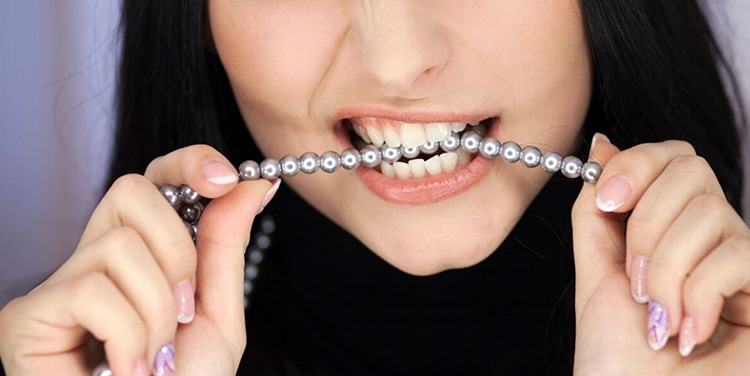
It’s time for some more fun with another test: The Tooth Test! This simple technique will tell you if your pearls are authentic or fake. Ready?
Take your suspected pearl and rub it gently against one tooth (please don’t use sandpaper!).
Authentic pearls will produce an ever-so-slight creaking sound as soon as even remotely more than normal friction occurs: music to a jeweler’s ears!
This audible confirmation will give you confidence that what you’re holding is actually worth something.
This “scratchy” confirmation should give peace of mind that this isn’t just any old set of pebbles bouncing around in your handbag.
Method #4: Bouncing Test
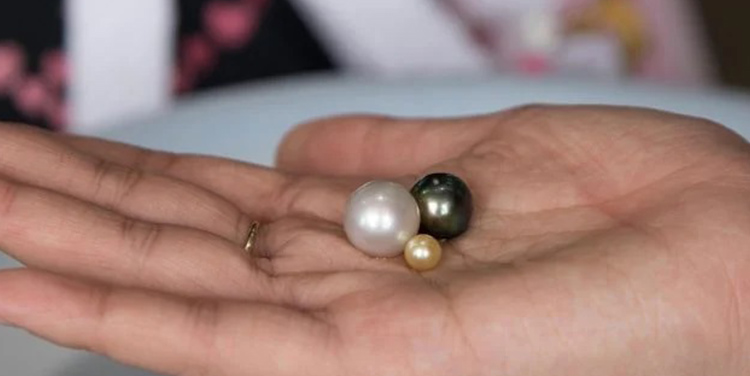
Time to show off those bouncing skills of yours! Drop the pearl on a hard surface and watch what happens.
Both real pearls and imitation ones will bounce, but here’s where things get really interesting.
Real pearls behave differently when dropped on a floor.
They jump sharply and repeatedly, as if dancing – it’s quite fascinating, actually.
This distinctive pattern of bounces is due to the difference in density between natural pearls (the real thing) and artificial ones (impostors).
It emerges because the real deal has more intensity and frequency of bounces than its mimics.
So prepare for some gravity-powered fun as you throw your pearls onto the ground in pursuit of knowledge.
And bear in mind: while both types can leap like salmon, it’s their rhythm that tells all.
Method #5: Imperfections Test
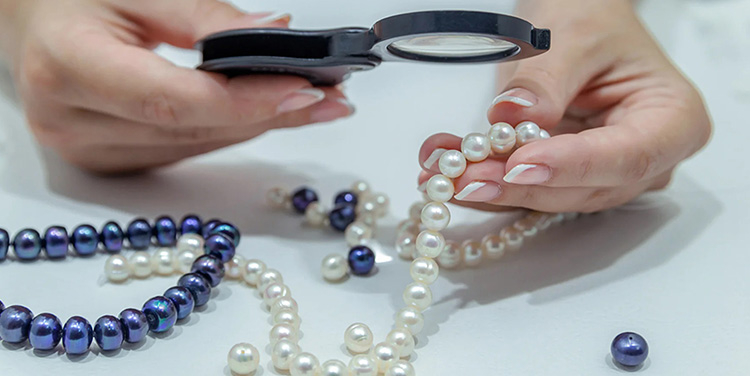
For this method, you’ll need daylight and a magnifying glass – plus a dollop of curiosity.
Examine closely the shape of your pearl bead secret: natural ones rarely have an absolutely flawless ideal shape or perfectly smooth surface because they are created without human intervention.
Slight imperfections are inevitable (though there are exceptions to this rule;
exquisite examples worth more than $10k may have near-perfection, so if you didn’t pay that much for your piece, chances are 99.9% it’s not genuine).
Don’t hold back: scrutinize with confidence! Grab that detective magnifying glass and take a good look at that bead!
Method #6: String of Pearls Examination
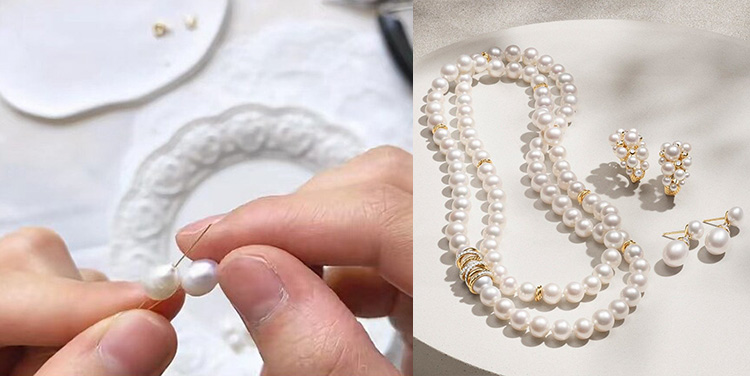
To differentiate between real pearls and their imitations, examine the string of pearls in a necklace or bracelet.
Move one pearl to the side and check the edges of the hole through which the string passes for damage with your eyes.
If you see chipping or flaking of the top layer, likely these are not genuine pearls.
Real pearls always appear flawless under close examination, while inexpensive imitations often show signs of wear.
So, when you come across a beaded necklace or a pearl bracelet in the future, use this quick technique to check them out – it’s an easy way to ensure that you’re investing in timeless beauty made from genuine pearls.
Method #7: Weight Test

Weight is key when telling real apart from fake – authentic pearls grown naturally have far more heft than plastic commonly used in counterfeits.
Note that some imperfections simply cannot be viewed by the naked eye alone - microchips and slight peeling can easily go unobserved. You would do well!
Therefore, seek advice from a trusted jeweler if 100% accuracy is what you’re after - gemology specialists can provide valuable insight into both the authenticity and overall quality of your precious pearls.
It’s also worth bearing in mind not all “pearls” are created equal: cultured varieties have become increasingly popular over recent years, and although they are very definitely natural (rather than fake), knowing how to distinguish them on your quest for genuineness is helpful.
Remember: with these expert methods at your fingertips, navigating the world of pearls should now present no problem whatsoever – ensuring every jewelry purchase in the future will truly be divine… and totally legitimate!
Bottom Line
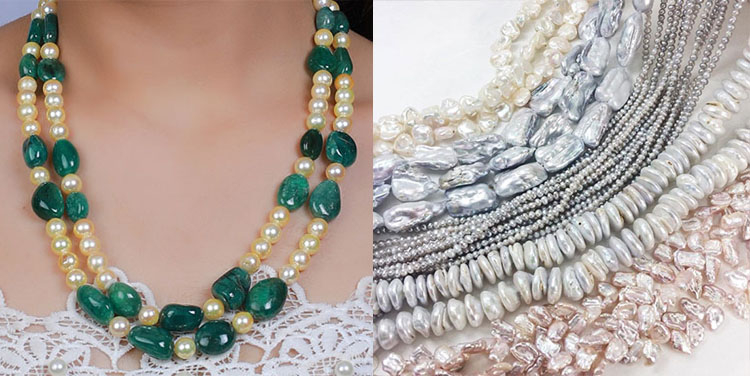
Here are seven valuable techniques at your disposal that can make certain the pearls you’re buying are, in fact, genuine.
From checking surface texture to evaluating weight and seeking professional help, these tactics will empower you to be an informed consumer when purchasing pearl jewelry.
Watch out for substitutes that look good but don’t have any staying power—and embrace the timeless beauty of real pearls, which only improve with age.
Use this guide as your roadmap through the world of fine jewelry and revel in the incomparable charm of these prize possessions.


Leave a Comment